 W
WMadagascar is an island nation located off the southeastern coast of Africa. Because of its long separation from neighboring continents—through tectonic movement, it split from Africa about 160 million years ago, and from India around 90 million years ago—it contains many species endemic to the island. Of the 308 bird species recorded on Madagascar, 108 are found nowhere else on earth, and a handful of others are shared only with the neighbouring Comoro Islands, 2 have been declared extinct, 36 are globally threatened, 7 species are introduced by humans.
 W
WThe African spoonbill is a long-legged wading bird of the ibis and spoonbill family Threskiornithidae. The species is widespread across Africa and Madagascar, including Botswana, Kenya, Mozambique, Namibia, South Africa, and Zimbabwe.
 W
WThe Malagasy bulbul is a species of songbird in the bulbul family, Pycnonotidae. It is found on Madagascar and other regional islands in the south-western Indian Ocean.
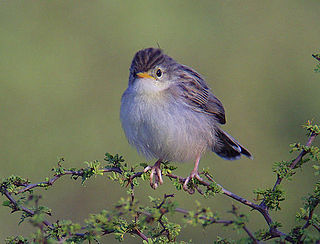 W
WThe Madagascan cisticola is a species of bird in the cisticola family (Cisticolidae), it inhabits in areas to the west of the ˞Indian Ocean. It forms a superspecies with the closely related zitting cisticola and the Socotra cisticola.
 W
WThe Malagasy coucal or Madagascar coucal is a species of cuckoo in the family Cuculidae. It is found in Madagascar and in the Seychelles, where it occurs on Aldabra and was formerly present on Assumption Island and Cosmoledo. Its natural habitats are dense vegetation in subtropical or tropical moist lowland forests, mangrove forests, rough grassland, marshes and reedbeds.
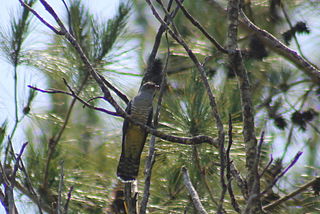 W
WThe Madagascan cuckoo, also known as the Madagascar lesser cuckoo, is a species of cuckoo in the family Cuculidae. Though it breeds only in Madagascar, it spends the non-breeding season in a number of countries in the African Great Lakes region and the Indian Ocean islands: Burundi, Democratic Republic of the Congo, Madagascar, Malawi, Rwanda, South Africa, Uganda and Zambia.
 W
WThe Madagascan cuckooshrike, also known as the ashy cuckooshrike, is a species of bird in the family Campephagidae. The Comoros cuckooshrike is sometimes considered a distinct species.
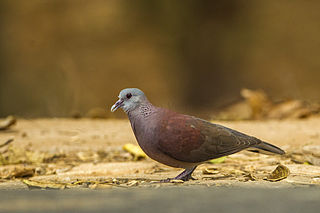 W
WThe Malagasy turtle dove is a bird species in the pigeon and dove family, Columbidae. It is found in British Indian Ocean Territory, the Comoros, Madagascar, Mauritius, Mayotte, Réunion, and the Seychelles.
 W
WThe crested drongo is a passerine bird in the family Dicruridae. It is black with a bluish-green sheen, a distinctive crest on the forehead and a forked tail. There are two subspecies; D. f. forficatus is endemic to Madagascar and D. f. potior, which is larger, is found on the Comoro Islands. Its habitat is lowland forests, both dry and humid, and open savannah country. It is a common bird and the IUCN has listed it as "least concern".
 W
WThe Malagasy paradise flycatcher is a species of bird in the family Monarchidae. It is found in Comoros, Madagascar, and Mayotte. Its natural habitats are subtropical or tropical dry forest and subtropical or tropical moist lowland forest.
 W
WThe red fody, also known as the Madagascar fody in Madagascar, red cardinal fody in Mauritius, or common fody, is a small bird native to Madagascar and introduced to various other islands in the Indian Ocean. It is a common bird within its restricted range, and the International Union for Conservation of Nature has assessed its conservation status as being of "least concern".
 W
WThe kelp gull, also known as the Dominican gull, is a gull that breeds on coasts and islands through much of the Southern Hemisphere. The nominate L. d. dominicanus is the subspecies found around South America, parts of Australia, and New Zealand. L. d. vetula is a subspecies occurring around Southern Africa.
 W
WThe Malagasy harrier is a bird of prey belonging to the marsh harrier group of harriers. It inhabits Madagascar and the Comoro Islands in the Indian Ocean. It was formerly regarded as a subspecies of the Réunion harrier but is increasingly treated as a separate species. It is also known as the Madagascar harrier, Madagascar marsh harrier or Malagasy marsh harrier.
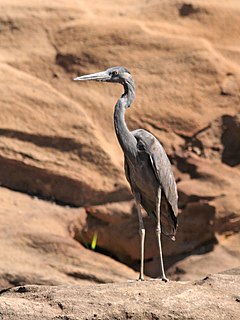 W
WHumblot's heron, also known as the Madagascar heron, is a species of heron. In Madagascar, it is common on the north and west coasts of the island, but is also found inland, especially near Lake Alaotra. It is also present in the Comoro Islands and Mayotte. Humblot's heron is an endangered species, with a population estimated at only 1,500 mature individuals. Its population is apparently declining. The major threats the heron faces are poaching and habitat destruction
 W
WThe Malagasy pond heron is a species of heron of the family Ardeidae. They are primarily seen in the outer islands of the Seychelles, Madagascar, and on the east coast of Africa including Kenya, Tanzania, and Uganda. Being native to Madagascar, this species is often referred to as the Madagascar pond heron or Madagascar squacco heron. The population of this heron is estimated at 2,000–6,000 individuals, with only 1,300–4,000 being mature enough to mate.
 W
WThe Malagasy kingfisher or Madagascar kingfisher is a species of bird in the family Alcedinidae that is found in Madagascar, Mayotte and the Comoros. Its natural habitat is subtropical or tropical mangrove forests.
 W
WThe Mascarene martin or Mascarene swallow is a passerine bird in the swallow family that breeds in Madagascar and in the Mascarene Islands. The nominate subspecies occurs on Mauritius and Réunion and has never been found away from the Mascarene Islands, but the smaller Madagascan subspecies, P. b. madagascariensis, is migratory and has been recorded wintering in East Africa or wandering to other Indian Ocean islands.
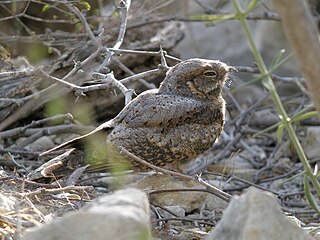 W
WThe Madagascan nightjar is a species of nightjar in the family Caprimulgidae. It is native to Madagascar, Nosy Boraha and Aldabra. Its natural habitats are subtropical or tropical moist lowland forest and subtropical or tropical moist montane forest.
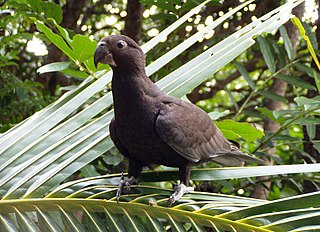 W
WThe greater vasa parrot is one of two species of vasa parrot, the other being the lesser vasa parrot C. nigra. The greater vasa parrot can be found throughout Madagascar and the Comoros.
 W
WThe lesser vasa parrot or black parrot is a black coloured parrot native to Comoros, Madagascar, Mayotte, and Seychelles. It is one of two species of vasa parrots, the other being the greater vasa parrot C. vasa; although, the subspecies C. n. barklyi, of the Seychelles, is sometimes split as a third species, the Seychelles black parrot.
 W
WThe Madagascan partridge is a species of bird in the family Phasianidae. It is widespread across Madagascar. It has been introduced to Réunion.
 W
WThe Madagascan green pigeon is a species of bird in the family Columbidae. It is found in Madagascar, Comoros, and Mayotte. The taxon griveaudi, by most authorities considered a subspecies of the Madagascan green pigeon, is sometimes considered a separate species, the Comoros green pigeon. Its natural habitats are subtropical or tropical dry forest and subtropical or tropical moist lowland forest.
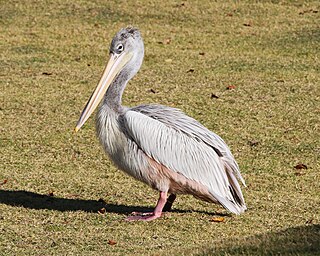 W
WThe pink-backed pelican is a bird of the pelican family. It is a resident breeder in the swamps and shallow lakes of Africa, southern Arabia, and southern India; it has also apparently extirpated in Madagascar.
 W
WKittlitz's plover is a small shorebird in the family Charadriidae that breeds near coastal and inland saltmarshes, sandy or muddy riverbanks or alkaline grasslands with short vegetation. It is native to much of Sub-Saharan Africa, the Nile Delta and Madagascar. It is thought to be mainly monogamous and has monomorphic plumage.
 W
WThe Madagascan pratincole is a species of bird in the family Glareolidae. It is found in Comoros, Ethiopia, Kenya, Madagascar, Mozambique, Somalia, Tanzania, possibly Mauritius, and possibly Réunion. Its natural habitats are subtropical or tropical seasonally wet or flooded lowland grassland, rivers, freshwater lakes, rocky shores, and intertidal marshes. It is threatened by habitat loss.
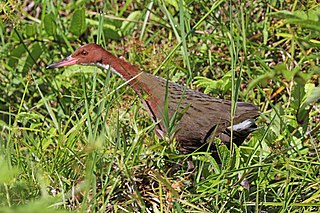 W
WThe white-throated rail or Cuvier's rail, is a species of bird in the family Rallidae. It is found in the Comoros, Madagascar, Mayotte, and Seychelles. The nominate subspecies is found on Madagascar. A flightless subspecies, Dryolimnas (cuvieri) aldabranus, inhabits Aldabra, while the semi-flightless subspecies D. c. abbotti from Assumption Island went extinct in the early 20th century due to introduced predators. A fourth extinct flightless subspecies or descendant species is known from fossil remains on Aldabra, and anatomically was almost identical to the Aldabra rail. This subspecies was wiped out by rising sea levels during the Pleistocene, but the atoll was recolonized by the white-throated rail after it resurfaced; this population evolved in a very similar way to the extinct subspecies, eventually evolving into the modern Aldabra rail. This is one of the very few observed instances of iterative evolution, in which a distinct population is wiped out from an area but it is recolonized by members of the source population, who evolve in the same way as the extinct population.
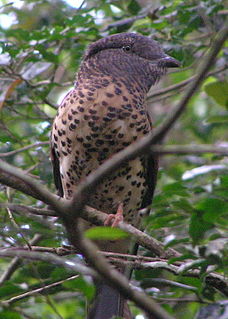 W
WThe cuckoo roller or courol is the only bird in the family Leptosomidae, which was previously often placed in the order Coraciiformes but is now placed in its own order Leptosomiformes. Its nearest relative is not clear. Morphological evidence may suggest a placement in or near to Falconiformes. In the rather comprehensive DNA study by Hackett et al, this and the hoatzin are the only two birds whose position is unclear, although the cuckoo roller seems to be at the root of a group that contains the Trogoniformes, Bucerotiformes, Piciformes, and Coraciiformes.
 W
WFrances's sparrowhawk is a small bird of prey. The nominate subspecies, A. f. francesiae, is endemic to Madagascar, the other subspecies are found in the Comoro Islands.
 W
WThe Malagasy green sunbird, also known as the long-billed green sunbird, is a species of bird in the family Nectariniidae. It has been placed in the genus Nectarinia. It is found in the Comoros and Madagascar. Its natural habitats are subtropical or tropical dry forest, subtropical or tropical moist lowland forest, subtropical or tropical mangrove forest, and subtropical or tropical moist montane forest.
 W
WThe souimanga sunbird is a small passerine bird of the sunbird family, Nectariniidae. It is native to the islands of the western Indian Ocean where it occurs on Madagascar, the Aldabra Group and the Glorioso Islands.
 W
WThe Alpine swift formerly Apus melba, is a species of swift. The genus name is from the Ancient Greek takhus, "fast", and marptis, "seizer". The specific name melba comes from ‘melano-alba’ or ‘mel-alba’; Eigenhuis & Swaab (1992) posited that ‘melba’ might be a short form for ‘melano-alba’ or ‘mel-alba’. Linnaeus certainly referred to these two colors in his diagnosis.
 W
WThe Malagasy black swift or Madagascar swift, is a species of swift in the family Apodidae. It is endemic to Madagascar and the Comoro Islands.
 W
WThe Caspian tern is a species of tern, with a subcosmopolitan but scattered distribution. Despite its extensive range, it is monotypic of its genus, and has no accepted subspecies. The genus name is from Ancient Greek hudros, "water", and Latin progne, "swallow". The specific caspia is from Latin and, like the English name, refers to the Caspian Sea.
 W
WThe blue vanga is a bird species in the family Vangidae. It is in the monotypic genus Cyanolanius. It is found in Comoros, Madagascar, and Mayotte, where its natural habitats are subtropical or tropical dry forest and subtropical or tropical moist lowland forest.
 W
WThe Malagasy brush warbler, also known as the Madagascar brush-warbler, is a species of Old World warbler in the family Acrocephalidae. It is found in Comoros and Madagascar. Its natural habitats are subtropical or tropical dry forests, subtropical or tropical moist lowland forests, and subtropical or tropical moist shrubland.
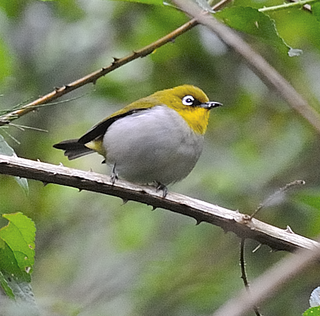 W
WThe Malagasy white-eye is a species of bird in the white-eye family, Zosteropidae. Found in the Comoros, Madagascar, Mayotte, and Seychelles, its natural habitats are subtropical or tropical dry forests, subtropical or tropical moist lowland forests, subtropical or tropical mangrove forests, and subtropical or tropical moist montane forests.